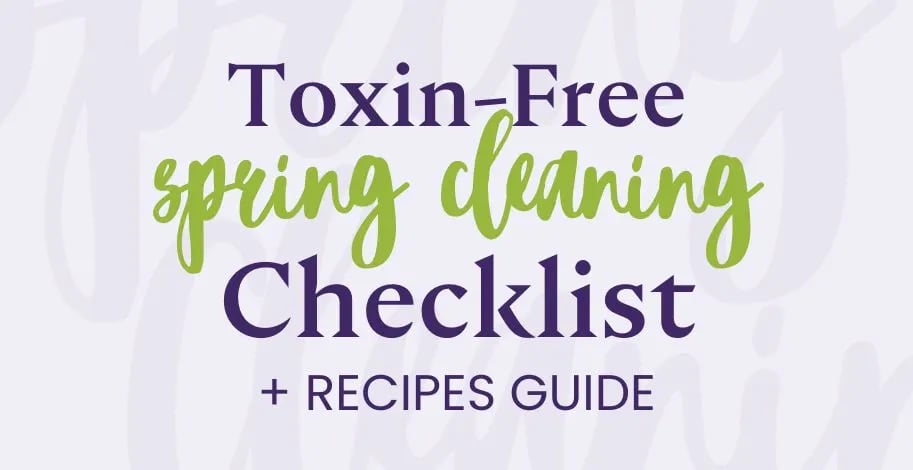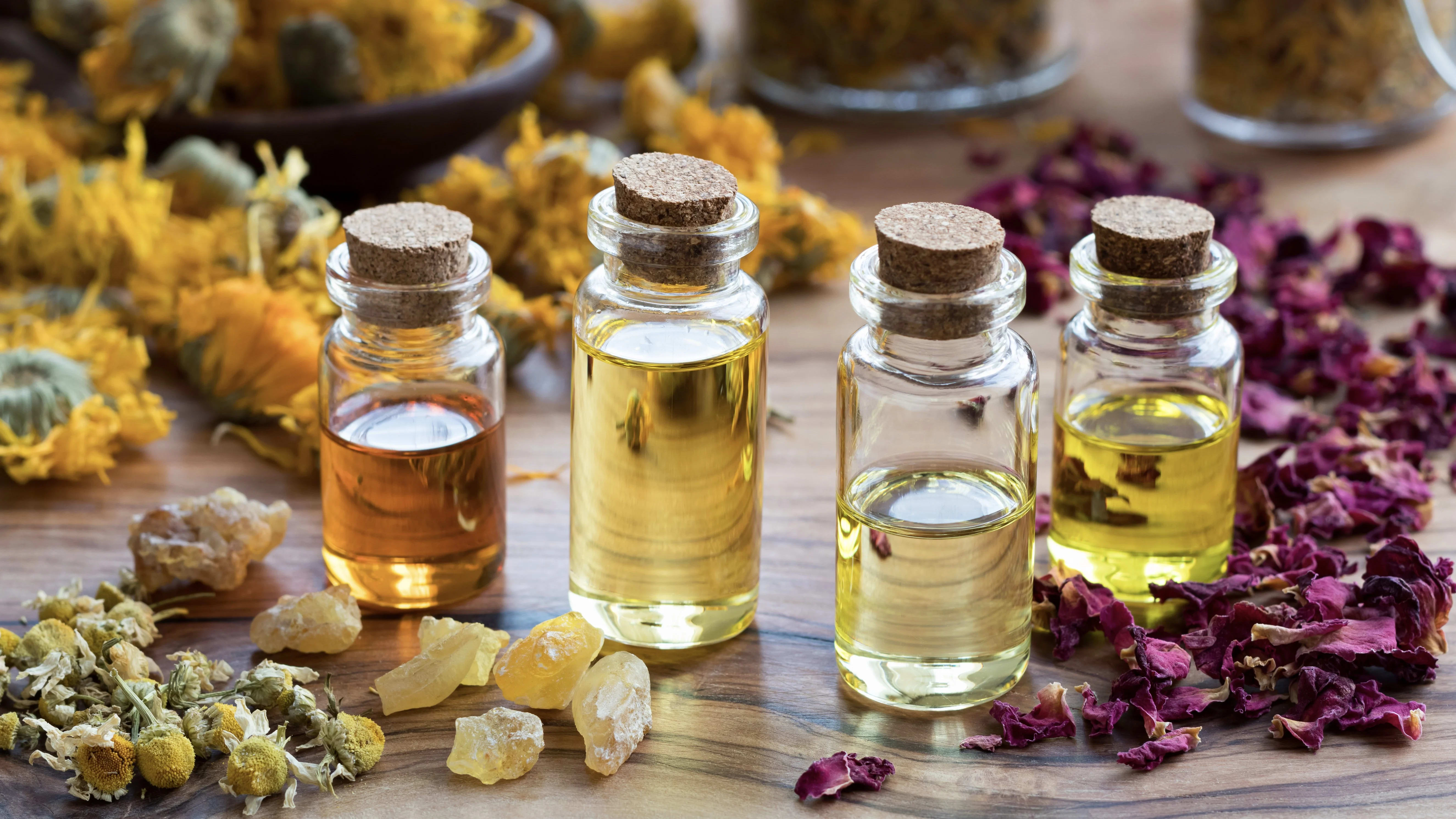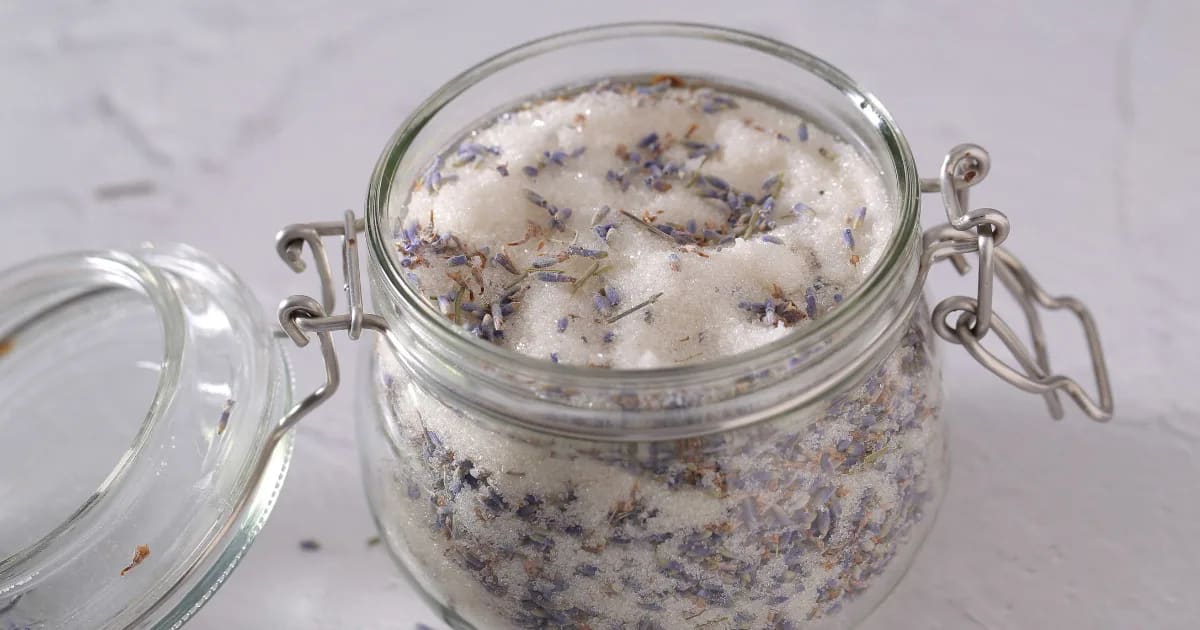Spring Cleaning – Natural Home Detox with Essential Oils for a Safer, Fresher Living Space

Why Our Homes Need a Natural Spring Detox
About a year ago, I found myself in a forced season of stillness. A hiking misstep left me with several broken bones in my foot, and suddenly, the simplest routines—moving freely through my home, tidying up a spill, sweeping away the day’s debris—were beyond my reach. Instead, I was confined to my bed and my favorite comfy chair, foot elevated, watching the dust settle in corners I couldn't reach.
So I hired a wonderful woman to help with the cleaning—a true professional with years of experience. She arrived, did her work with efficiency, and left my home gleaming. But that night, something felt off. My sinuses were irritated, my nose stuffy. Even the cats were sneezing. A thick, artificial scent hung in the air, clinging to fabrics and lingering in my lungs.
I opened the windows wide, inviting in the crisp air, but the chemical haze was stubborn. It took days for my home to feel like home again.
Conventional cleaning supplies don’t just wipe away dirt—they leave something behind. Something invisible yet pervasive. Something that affects the air we breathe, the surfaces we touch, the very atmosphere of our sacred spaces.
When I asked my cleaning professional if she had access to natural alternatives, she admitted that she didn’t—but she’d be happy to use whatever I provided.
So I got to work, mixing up my own simple, natural cleaners with essential oils, warm water, and simple ingredients I already had in my pantry. The next time she cleaned, my home was just as spotless, but this time, it smelled like fresh citrus and lavender, not an artificial storm of chemicals. No congestion, no sneezing cats—just clean air, clean surfaces, and peace of mind.
The Illusion of Chemical Clean
Many of us have been conditioned to believe that a thorough cleaning must come with the sharp scent of bleach, the foaming action of a lab-engineered solution, or a long list of unpronounceable ingredients. We’ve been sold the idea that only the strongest, most industrial-grade chemicals can tackle grime, dust, and bacteria.
But nature has always provided us with the best cleaning agents.
This post is an invitation to rethink spring cleaning. To clear not just the dust but the invisible toxins we bring into our homes. To swap out the harsh for the gentle, without sacrificing effectiveness. And to embrace a spring cleaning routine that’s as nurturing as it is refreshing.
You’ll learn about ingredients to avoid, effective natural alternatives, essential oils that fight germs and freshen our homes, and several recipes to jumpstart your spring cleaning, including:
All-Purpose Cleaner
Glass & Mirror Cleaner
Natural All-Purpose Scrub
Let’s get started!
Why Go Toxin-Free for Spring Cleaning?
We all want a home that feels fresh, safe, and truly clean. But if a clean home comes at the cost of irritated lungs, hormone-disrupting chemicals, and residues that linger on our skin and surfaces, is it really clean?
Most store-bought cleaners contain ingredients that do more harm than good. The Environmental Working Group tested 30 off-the-shelf cleaning products, and detected a total 193 hazardous volatile organic compounds (VOCs)—with the “potential to cause health harms such as respiratory system damage, increased cancer risk and developmental and reproductive impacts.”
The best spring cleaning products are natural and homemade. They harness the power of plants and minerals to break down grime, remove dust, cut through grease, and neutralize odors—without exposing your home to toxins.
And then there’s the environmental impact—many of these chemicals wash down our drains, contaminating waterways and harming aquatic life.
Switching to natural cleaning products allows you to create a home environment that supports your health, rather than working against it.
Essential Oils for a Natural Spring Clean
The beauty of natural cleaning lies in its simplicity. With just a handful of ingredients, you can tackle nearly every cleaning task in your home, from removing dust, to scrubbing the floors, to improving indoor air quality. Let’s take a look at the key ingredients you’ll need to create your own toxin-free spring cleaning arsenal—starting with essential oils!
Essential Oils: Nature’s Powerhouses
Essential oils are incredible cleaning agents that bring both antimicrobial benefits and uplifting scents to your home. While many essential oils blend well into homemade cleaning products, I’ve narrowed this list down to my 5 favorites.
Eucalyptus Oil (Eucalyptus globulus): Eucalyptus purifies the air and helps fight germs while adding a crisp, invigorating scent. It’s ideal for tackling areas like the kitchen or bathroom. This is thanks to its main component, 1,8-cineole, which has been shown to have a variety of antimicrobial benefits against bacteria, viruses, and fungi (Mahumane et al. 2016; Kordali et al. 2005; Kubiça et al. 2014). See 3 great ways to use eucalyptus here!
Lavender Oil (Lavandula angustifolia): Lavender isn’t just calming—it purifies as it soothes. Its primary compound, linalool, helps neutralize a variety of common microbes, including the influenza virus (Fisher & Phillips 2006; Nakahara et al. 2014; Choi 2018). I love using lavender to fight fungal skin issues, and to refresh my linens and upholstery.
Lemon Oil (Citrus limon): Lemon oil is an excellent choice for cutting through grease in the kitchen and freshening up any room. It helps neutralize odors and leaves a bright, fresh scent. The component d-limonene shows up in all citrus oils, and is well-known for destroying common bacteria and viruses (Corrêa et al. 2023; Okla et al. 2019).
Sweet Orange Oil (Citrus sinensis): A gorgeous citrus oil perfect for freshening up any space, sweet orange also has natural antibacterial properties (Corrêa et al. 2023; Okla et al. 2019). Like lemon, it contains d-limonene. The two oils work well together and in blends to bring a beautiful pop of scent to your space while fighting germs.
Tea Tree Oil (Melaleuca alternifolia): Tea tree oil is a versatile natural antimicrobial, perfect for fighting a wide range of germs on surfaces. This is a great oil for your DIY bathroom cleaning products! The component terpinen-4-ol in tea tree has been shown to disrupt the cell membranes of bacteria and other germs, rendering them harmless (Cox et al. 2000; Carson et al. 2006). Discover more about tea tree.
More Natural Cleaning Supplies
The most versatile, effective natural cleaning ingredient you can use is simply warm or hot water. Heat helps break down grease, loosen dirt, and dissolve residues more effectively than cold water. Keep that in mind as you mix up your natural products, blending hot water with some of the following ingredients:
Castile Soap: Made from vegetable oils, Castile soap is a versatile, gentle, all-purpose cleaning product. It works well as hand soap, body wash, and even dish soap. Read more about Castile soap—including how it works—here.
Baking Soda: Its abrasive quality makes it an essential part of any natural cleaning cabinet. It’s a powerful air freshener, too!
White Vinegar: A natural disinfectant and deodorizer that has been used for centuries to cut through grease and break down mineral deposits.
Hydrosols: Hydrosols are aromatic waters produced by steam distillation. Some hydrosols have purifying properties—as well as beautiful aromas! Learn more about them on our blog!
Lemon Juice: An excellent degreaser, lemon juice adds strength to your cleaners and freshens the air. It even has a gentle bleaching effect on some surfaces.
Essential Oils: Many essential oils, like those I’ve shared above, add antimicrobial benefits and a fresh, uplifting scent to your DIY cleaning products.
These are your go-to ingredients to start building your collection of natural cleaning products. With these essential oils and base ingredients, you'll be able to tackle every corner of your home with confidence.
Blending Essential Oils into Natural Ingredients
Once you’ve chosen the right essential oils for the job, the next step is weaving them into your cleaning routine.
When we’re blending essential oils into products for our body—such as body oil, lotion, or even an inhaler—we want to keep our drop counts within a safe range. At Aromahead, we usually use a 1–3% dilution ratio (which translates to about 5–18 drops of essential oil per 1 oz/30 ml of carrier). Learn more about diluting essential oils for skin application in this post.
But cleaning products aren’t being used for our body. So depending on the blend we’re making, it’s okay if you choose to use a higher drop count—up to 20 drops per fl oz (30 ml).
It’s also okay to add essential oils to water-based cleaning products, like those made with hydrosol. (In water-based body products, we need to add a dispersant to make sure the essential oils stay distributed through the blend, so we’re protecting our skin. But again, cleaning products aren’t going on our skin. It’s okay to skip the dispersant.) Just be sure to shake your water-based blends well each time you use them. I also prefer to make a fresh batch every few weeks or so.

3 DIY Natural Cleaning Recipes
These simple, effective DIY cleaning recipes will help you tackle spring cleaning with confidence—without exposing yourself (or your family) to harsh chemicals. All you need are a few pantry staples, and you're good to go!
DIY All-Purpose Cleaner
Perfect for removing dust and everyday messes from countertops, kitchen cabinets, and other surfaces!
Ingredients
½ cup White Vinegar
1 cup Lemon Thyme Hydrosol (Thymus citriodora)
80 drops Lemon Oil (Citrus limon)
Directions
Mix the ingredients in a 16 oz (about 470 ml) spray bottle, shake well, and use it to wipe down surfaces. This is one of the best spring cleaning tips—keeping a natural all-purpose cleaner on hand makes everyday tidying effortless.
Be sure to spot test this—try it on a small, out-of-the-way area before using it on the entire surface. You want to be sure the finishes on your surfaces respond well to your natural cleaner.
Want a super-charged version of this recipe? Make this Cinnamon Bark Broad-Spectrum Antibacterial Cleaner.
DIY Glass & Mirror Cleaner
For streak-free windows, mirrors, and glass surfaces.
Ingredients
½ cup White Vinegar
½ cup Warm Water
50 drops Eucalyptus Oil (Eucalyptus globulus)
Directions
Combine ingredients in an 8 oz (about 235 ml) spray bottle, shake, and spritz onto glass surfaces to remove dust and buildup. Wipe away with a microfiber cloth or newspaper for a sparkling, streak-free shine. Having clean windows is a great way to bring more natural light into your home!
If you like this recipe, you’ll also enjoy this DIY lavender & orange glass cleaner.
Natural All-Purpose Scrub
Great for scrubbing bathroom tiles, sinks, and stovetops.
Ingredients
½ cup Baking Soda
2 Tbsp Castile Soap
30 drops Tea Tree Oil (Melaleuca alternifolia)
Directions
Mix the ingredients in a small bowl to create a thick paste. Use a damp sponge to scrub away dirt and buildup. This recipe acts as a gentle abrasive, castile soap lifts away grease, and tea tree oil fights bacteria naturally. This DIY cleaner is a must-have for tackling deep cleaning tasks.
Corn starch also creates a great scrub! Get a recipe here on our blog.
Spring Home Maintenance & Seasonal Refresh
Sure, spring may be the time to set yourself a new cleaning schedule. But it’s also about renewal. As the days grow longer and warmer, it’s time to swap out the remnants of winter and prepare your home for the new season. Here’s how to refresh your space while tackling a few key spring maintenance tasks. These simple good housekeeping steps keep your home feeling fresh, cozy, and well-maintained as you step into spring!
Wash and air out blankets – Remove dust, pet dander, and lingering winter odors. If possible, hang them outside to soak up the cozy earth scent of fresh air. I also love linen sprays.
Rotate your wardrobe – Store heavy winter coats and bulky snow gear, and bring out lighter layers.
Refresh linens and textiles – Run them through a gentle cycle in the washing machine. Add a capful of lavender hydrosol to give them a naturally soothing scent.
Dust your shelves and decor – Decorations on our shelves can go untouched and gather dust all year. Run a damp cloth over shelves and precious items, and use a dry cloth or feather duster to clean sensitive items like books.
Clean floors and carpets – Break out your broom and mop to clean your floors, run the vacuum cleaner over carpets and area rugs, and wash bathmats. You can make a spray for carpets and rugs, too!
Replace your shower liner – Or give it a thorough sponging down with the DIY All-Purpose Cleaner recipe I shared above. You may also want to wash your shower curtain or air it out.
Check smoke alarm batteries – Safety first! Replace the batteries if needed to keep your home protected. Most smoke alarms take AA batteries.
Clean out gutters and air vents – Fall and winter leave behind plenty of leaves and other debris that can dam up gutters, and air vents get clogged. Clean them out to make sure your gutters flow well, and your indoor air quality is healthy.
Deep clean upholstery and fabrics – Give your couch, curtains, and throw pillows some love by running removable covers through the washing machine or steam-cleaning them.
Free Download: Your Complete Spring Cleaning Checklist + Natural Recipes
Spring cleaning is a chance to reset, refresh, and create a healthier home. But with so many tasks to tackle, it’s easy to feel overwhelmed. That’s where a well-organized spring cleaning checklist comes in!
To make your spring refresh simple and effective, I’ve put together the Toxin-Free Spring Cleaning Checklist + Recipes Guide—a complete, step-by-step resource packed with easy-to-follow tasks and natural cleaning recipes. This guide goes beyond the basics, offering extra DIY recipes and pro tips for a truly fresh, toxin-free home.
What You’ll Find In the Guide:
A room-by-room spring cleaning checklist so you don’t miss a thing
A complete collection of DIY cleaning recipes
Safe, effective swaps for conventional cleaning products
More essential oils for natural home detox (plus why they work)
Download your free guide now and get everything you need for a cleaner, healthier home!
Download the Toxin-Free Spring Cleaning Checklist + Recipes Guide

My Takeaway
Spring has a way of calling us to renewal. The world stretches awake from its winter slumber, shaking off the cold and inviting in the light. It’s the season of fresh air through open windows, the scent of rain-soaked earth, and the quiet satisfaction of wiping away the dust of yesterday.
Transformation isn’t always loud or dramatic. Sometimes, it’s the quiet choice to take another approach in life, to lean into natural choices instead of artificial convenience. When we swap out the artificial for the natural, we’re creating a space that breathes with us, that nurtures rather than irritates, that supports our well-being in the most elemental way. The crisp scent of lemon, the grounding aroma of lavender, the cleansing whisper of tea tree—these aren’t just fragrances. They’re reminders that nature has always known how to care for us.
So as you mix your sprays, scrub your surfaces, and open your windows wide, know that you’re doing more than freshening your home. You’re making space for clarity, for health, for deep, restorative breath. You’re welcoming in a season of lightness—not just in the air, but in the way you live.
Happy spring cleaning! Let it be a season that’s fresh, simple, and full of life.
REFERENCES
Carson, C. F., Hammer, K. A., & Riley, T. V. (2006). Melaleuca alternifolia (tea tree) oil: a review of antimicrobial and other medicinal properties. Clinical microbiology reviews, 19(1), 50-62.
Choi H. J. (2018). Chemical Constituents of Essential Oils Possessing Anti-Influenza A/WS/33 Virus Activity. Osong public health and research perspectives, 9(6), 348–353. https://doi.org/10.24171/j.phrp.2018.9.6.09
Corrêa, A. N. R., Weimer, P., Rossi, R. C., Hoffmann, J. F., Koester, L. S., Suyenaga, E. S., & Ferreira, C. D. (2023). Lime and orange essential oils and d-limonene as a potential COVID-19 inhibitor: Computational, in chemico, and cytotoxicity analysis. Food bioscience, 51, 102348. https://doi.org/10.1016/j.fbio.2022.102348
Cox, S. D., Mann, C. M., Markham, J. L., Bell, H. C., Gustafson, J. E., Warmington, J. R., & Wyllie, S. G. (2000). The mode of antimicrobial action of the essential oil of Melaleuca alternifolia (tea tree oil). Journal of applied microbiology, 88(1), 170-175.
Environmental Working Group. (2023, September 13). Cleaning products emit hundreds of hazardous chemicals, new study finds. Environmental Working Group. https://www.ewg.org/news-insights/news-release/2023/09/cleaning-products-emit-hundreds-hazardous-chemicals-new-study
Fisher, K., & Phillips, C. A. (2006). The effect of lemon, orange and bergamot essential oils and their components on the survival of Campylobacter jejuni, Escherichia coli O157, Listeria monocytogenes, Bacillus cereus and Staphylococcus aureus in vitro and in food systems. Journal of Applied Microbiology, 101(6), 1232-1240.
Kordali, S., Cakir, A., Mavi, A., Kilic, H. and Yildirim, A. (2005) Screening of chemical composition and antifungal and antioxidant activities of the essential oils from three Turkish Artemisia species. Journal of Agricultural and Food Chemistry 53, 5, 1408-1416.
Kubiça, T. F., Alves, S. H., Weiblen, R., & Lovato, L. T. (2014). In vitro inhibition of the bovine viral diarrhoea virus by the essential oil of Ocimum basilicum (basil) and monoterpenes. Brazilian Journal of Microbiology, 45(1), 209-214.
Mahumane, G. D., van Vuuren, S. F., Kamatou, G., Sandasi, M., & Viljoen, A. M. (2016). Chemical composition and antimicrobial activity of Eucalyptus radiata leaf essential oil, sampled over a year. Journal of Essential Oil Research, 1-14.
Nakahara, K., Alzoreky, N. S., Yoshihashi, T., Nguyen, H. T., & Trakoontivakorn, G. (2013). Chemical composition and antifungal activity of essential oil from Cymbopogon nardus (citronella grass). Japan Agricultural Research Quarterly: JARQ, 37(4), 249-252.
Okla, M.K., Alamri, S.A., Salem, M.Z.M., Ali, H.M., Behiry, S.I., Nasser, R.A,; Alaraidh, I.A., Al-Ghtani, S.M., Soufan, W. (2019). Yield, Phytochemical Constituents, and Antibacterial Activity of Essential Oils from the Leaves/Twigs, Branches, Branch Wood, and Branch Bark of Sour Orange (Citrus aurantium L.). Processes. 7, 363. https://doi.org/10.3390/pr7060363






